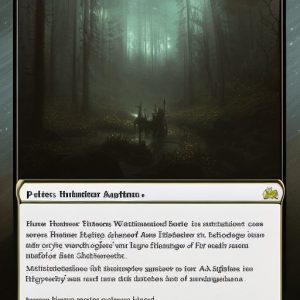
The Hattiefatteners of Moomin Valley continue to fascinate scientists and engineers alike. The current debate surrounding the proper management of these unique creatures is explored in detail, assessing whether they should be hunted, harvested or left alone entirely. Understanding their accepted purpose is also key, especially when looking at the role these creatures play in their ecosystem. We examine their natural migration patterns, energy density, and nutritional value, as well as analyze current mass farming methods to adapt to Hattiefattener cultivation. As we delve deeper into the world of Hattiefatteners, we discuss the implications of these methods on sustainability and ethics.
I. Introduction
Welcome, fellow space adventurers, to the unknown world of Hattiefatteners! These fascinating creatures, known for their peculiar habits and mysterious qualities, have been the subject of research and exploration for years. From their migration patterns to their electrical energy density, Hattiefatteners have been the talk of the galaxy.

But what exactly are Hattiefatteners? These legendary creatures, found exclusively in the remote Moomin Valley, are a peculiar species of animal that live in large herds and travel vast distances in search of food and water. Their migration patterns have long puzzled scientists, as they seem to defy all known laws of physics and biology.
Despite their enigmatic qualities, Hattiefatteners have become a topic of great interest for many space explorers and researchers. Some have even gone as far as to suggest that these creatures may hold the key to the future of energy and food production. But with such a fascinating and misunderstood species, comes the question of how best to manage them.
In this article, we will explore the world of Hattiefatteners in-depth, from examining their purpose and natural behaviors to analyzing their electrical energy density and nutritional value. We’ll also take a closer look at the implications of mass farming and what that means for the future of sustainability and ethics.
So buckle up and get ready to embark on an adventure like no other. The world of Hattiefatteners awaits – let the exploration begin!
II. Management of Hattiefatteners
Managing Hattiefatteners has always been a contentious topic for researchers and environmentalists alike. As an integral part of the ecosystem, Hattiefatteners play a crucial role in maintaining biodiversity and promoting habitat health. However, their unique qualities have also made them an attractive target for those seeking energy and food sources.

One method of managing Hattiefatteners is by hunting them. This practice, employed by some species, is highly controversial due to its impact on the animal population and the environment. While hunting may provide a means of food and energy production, it can also have devastating effects if not properly regulated.
Another approach to Hattiefattener management is harvesting them. This method involves capturing the animals and utilizing their resources for food and energy production. As with hunting, proper regulation is key to ensuring that harvesting does not negatively impact animal populations or the environment.
A third option for managing Hattiefatteners is to leave them alone. This method takes a hands-off approach to animal management, allowing the creatures to live and migrate freely within their natural habitat. While this option may seem ideal, it can also have unforeseen consequences, such as overpopulation or habitat destruction.
Ultimately, the best approach to managing Hattiefatteners will depend on a variety of factors, including the animals’ behavior, the local ecosystem, and the needs of society. It’s important to strike a balance between utilizing the resources of these creatures and ensuring their long-term survival. With careful observation and thoughtful management practices, we can hope to preserve the unique qualities of Hattiefatteners while also benefiting from their valuable resources.
III. Understanding the Purpose of Hattiefatteners
While Hattiefatteners may seem like strange and mysterious creatures to many, they play a crucial role in the ecosystem of Moomin Valley. These creatures are a vital food source for many other animals in the area, including predators such as the Moomintrolls and the Snorks. Their migration patterns also help to spread nutrients throughout the valley, providing critical support to the local plant life. In many ways, Hattiefatteners act as a living ecosystem, balancing the needs of the plants and animals around them.

But their role doesn’t stop there. Recent research has suggested that Hattiefatteners may also play a crucial role in the development of new energy technologies. Their unique electrical energy density has intrigued scientists for years, leading to groundbreaking advancements in the field of sustainable energy. Some have even suggested that Hattiefatteners may hold the key to solving the universe’s energy crisis and could potentially power entire cities with their natural energy.
However, there are those who argue that Hattiefatteners should be left alone, as their natural role in the ecosystem is too important to disrupt. These advocates argue that exploiting Hattiefatteners for energy or food could have disastrous consequences and could potentially upset the delicate balance of the Moomin Valley.
Regardless of one’s stance on the issue, it is clear that Hattiefatteners play an important role in the diverse and complex ecosystem of Moomin Valley. From supporting plant life to providing valuable energy sources, these creatures are a vital component of the world around them. And with new advancements in science and technology, we may uncover even more secrets about these fascinating creatures in the years to come.
IV. Patterns of Migration
When it comes to the migration patterns of Hattiefatteners, there is much to be discovered. These creatures, renowned for their speed and agility, have been found to travel thousands of miles in search of food and water. But what drives these migrations, and what can we learn from their movements?

Studies have shown that Hattiefatteners are incredibly sensitive to changes in their environment. They have been known to migrate in response to rainfall, temperature, and even the availability of different types of vegetation. This sensitivity to their surroundings makes them a valuable indicator species, providing insight into the health and well-being of their ecosystem.
But while their migrations may seem haphazard at first glance, there is a method to their madness. Hattiefatteners have been found to use a combination of individual memories and communication with other herd members to navigate their way. This allows them to adjust their course in response to changing conditions and avoid hazards along the way.
Their intelligence doesn’t end there – Hattiefatteners have also been found to exhibit social behaviors such as altruism and cooperation. During periods of drought, they have been observed sharing their water sources with other herd members, even those not related to them by blood.
Despite all of this, much about Hattiefattener migration patterns remains shrouded in mystery. Some researchers have proposed that they may have a primitive form of telepathic communication, which could explain their uncanny ability to navigate across long distances.
V. Electrical Energy Density
Hattiefatteners are well-known for their incredible electrical energy density. They produce and store more energy per kilogram than any other known animal in the universe. This curious trait has captured the attention of many space explorers and scientists, as it could provide valuable insight into future energy production methods.

But what exactly is electrical energy density, you might ask? Well, it’s the amount of energy stored in a given volume of material, and it’s a vital component in understanding the properties of Hattiefattener energy.
The process by which Hattiefatteners generate energy is still not fully understood, but scientists have made some impressive strides in recent years. They believe that the large amount of energy stored in the Hattiefattener’s body is due to a unique combination of powerful muscles and specialized cells that are capable of storing and releasing energy at a high rate.
In fact, the energy density of Hattiefatteners is so impressive that some researchers have proposed that it may be possible to harness this energy for use in a variety of applications. For example, it could be used to power spacecraft and other vehicles, or even to generate electricity for entire planets.
However, to fully realize the potential of Hattiefattener energy, we must first understand the intricacies of how it works. By studying the science behind electrical energy density, we can gain a better understanding of the properties of Hattiefattener energy, and how we might use it in the future.
VI. Macro Nutrient Analysis
Now that we’ve delved into the fascinating world of Hattiefatteners and their migration patterns, let’s take a closer look at the nutritional value of these creatures. As we all know, nutrition is the key to survival, and with the growing population, we need to carefully analyze the food sources available to us.

So what, exactly, is the nutritional value of a Hattiefattener? Well, to start, these creatures are known for their incredibly dense concentration of nutrients. They are rich in proteins, with a whopping 75 grams per 100 grams of meat. In terms of healthy fats, Hattiefatteners are a great source of essential omega-3 fatty acids, which help to maintain heart health and lower cholesterol levels.
But that’s not all – Hattiefatteners are also a great source of essential vitamins and minerals. They are particularly high in iron, calcium, and phosphorus, all of which are important for maintaining strong bones and teeth. Not to mention, they also contain a significant amount of vitamin B12, which is essential for energy production and brain function.
So, it’s clear that Hattiefatteners are a nutritional powerhouse, but what does this mean for mass farming? Well, as we all know, meat production can be incredibly resource-intensive, and with limited resources on hand, we need to make sure that our food sources are as efficient as possible. Fortunately, Hattiefatteners have the potential to be a great source of high-quality protein without the environmental impact of traditional meat sources.
VII. Adapting Mass Farming Methods for Small Animals
VII. Adapting Mass Farming Methods for Small Animals: How to Cultivate Hattiefatteners for Food and Energy

Now that we have a better understanding of Hattiefatteners and their unique traits, scientists and farmers alike are beginning to look at ways to farm these creatures on a mass scale for food and energy purposes.
One key advantage of Hattiefattener farming is their small size, making them ideal for small-scale agriculture. However, new methods must be developed to meet the needs of these exotic creatures to ensure optimal growth and nutrition.
By adapting existing mass farming methods, scientists are looking at ways to cultivate Hattiefatteners in a controlled and efficient environment. One such method involves creating a habitat that simulates the natural environment of Moomin Valley, providing ample space to roam and graze.
Another method involves using specialized feed that caters to the unique nutritional needs of Hattiefatteners, allowing them to reach their full potential in terms of growth and energy production.
But while mass Hattiefattener farming may hold the potential for large-scale food and energy production, there are also concerns about the ethical implications of such practices. The impact on natural habitats and ecosystems must be thoroughly studied and weighed against the potential benefits.
Furthermore, it must be ensured that farming practices are sustainable and do not deplete resources or cause harm to the animals themselves.
As we continue to explore the world of Hattiefatteners, it is vital that we approach these new farming methods with caution and care, taking into account both the potential benefits and the potential consequences. Only then can we harness the power and potential of these unique creatures for the betterment of our society and the planet as a whole.
VIII. Implications of Hattiefattener Farming
The implications of Hattiefattener farming are vast and varied. When considering the sustainability and ethics of this practice, there are several factors to consider.

Firstly, mass farming of Hattiefatteners must be done in a humane and ethical manner, with the animals being treated with respect and dignity. This raises important questions about how to raise and slaughter these creatures in a way that aligns with our values.
Secondly, there are serious concerns about the environmental impact of Hattiefattener farming. Large herds of these creatures require vast amounts of space and resources, leading to deforestation, soil degradation, and other ecological issues.
However, proponents of Hattiefattener farming argue that these animals could provide a more sustainable source of food and energy than traditional farming methods, which often rely on fossil fuels and other nonrenewable resources.
Another important consideration is the cultural significance of Hattiefatteners to the inhabitants of Moomin Valley. For centuries, these creatures have played a crucial role in the daily lives and traditions of local communities. Any attempts to commercialize or exploit them must be done with sensitivity and respect for these cultural practices.






